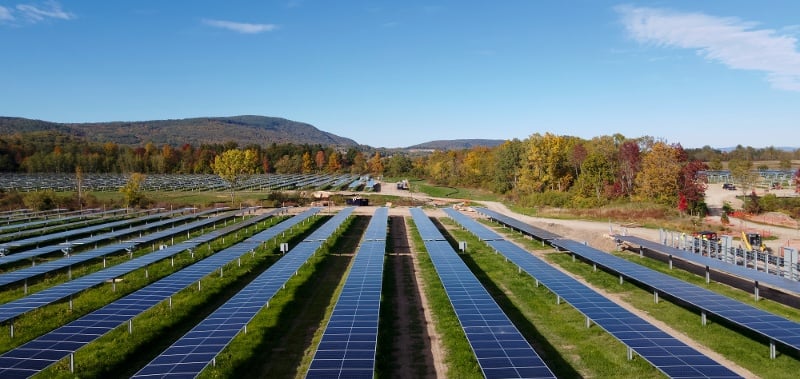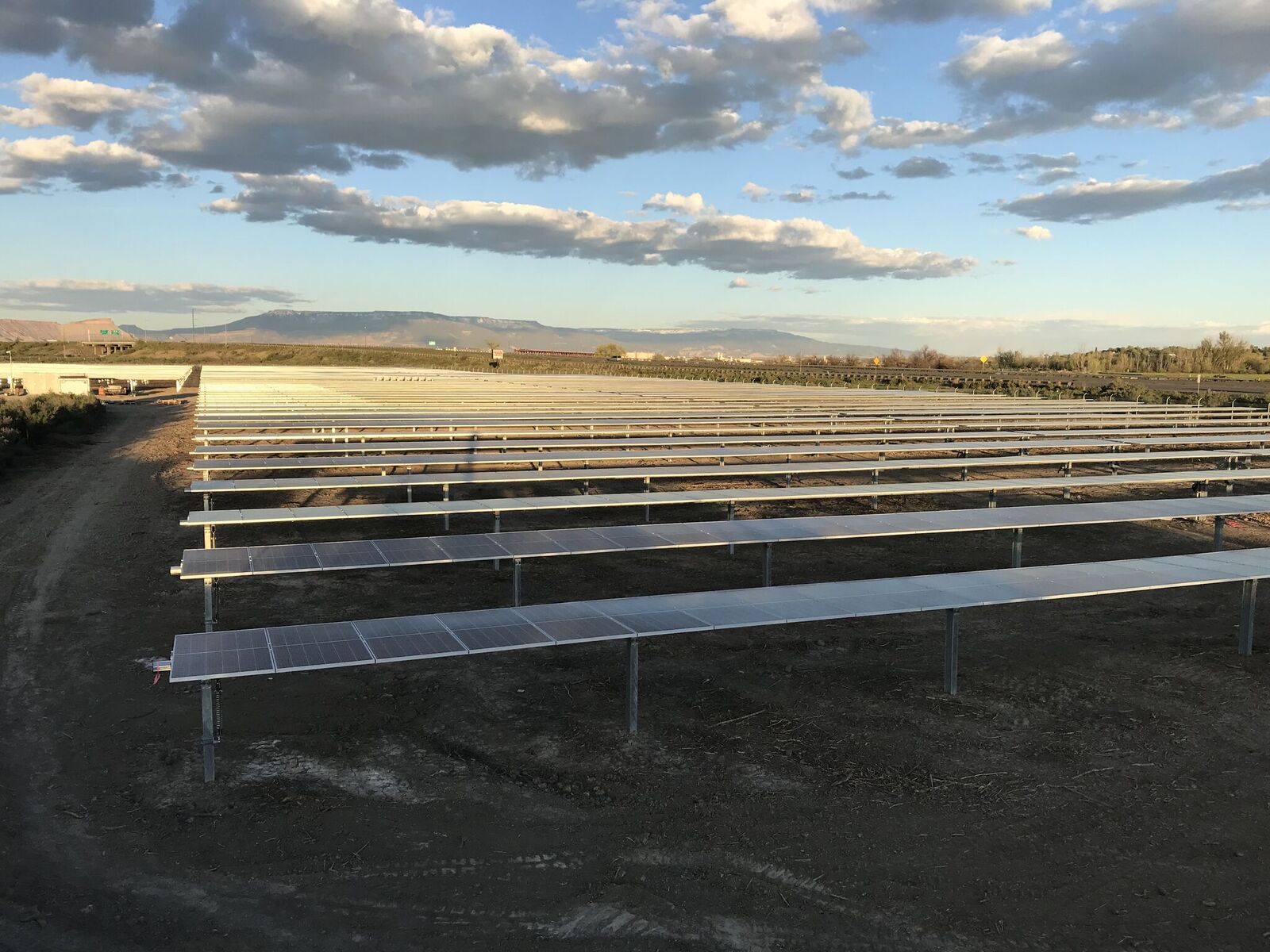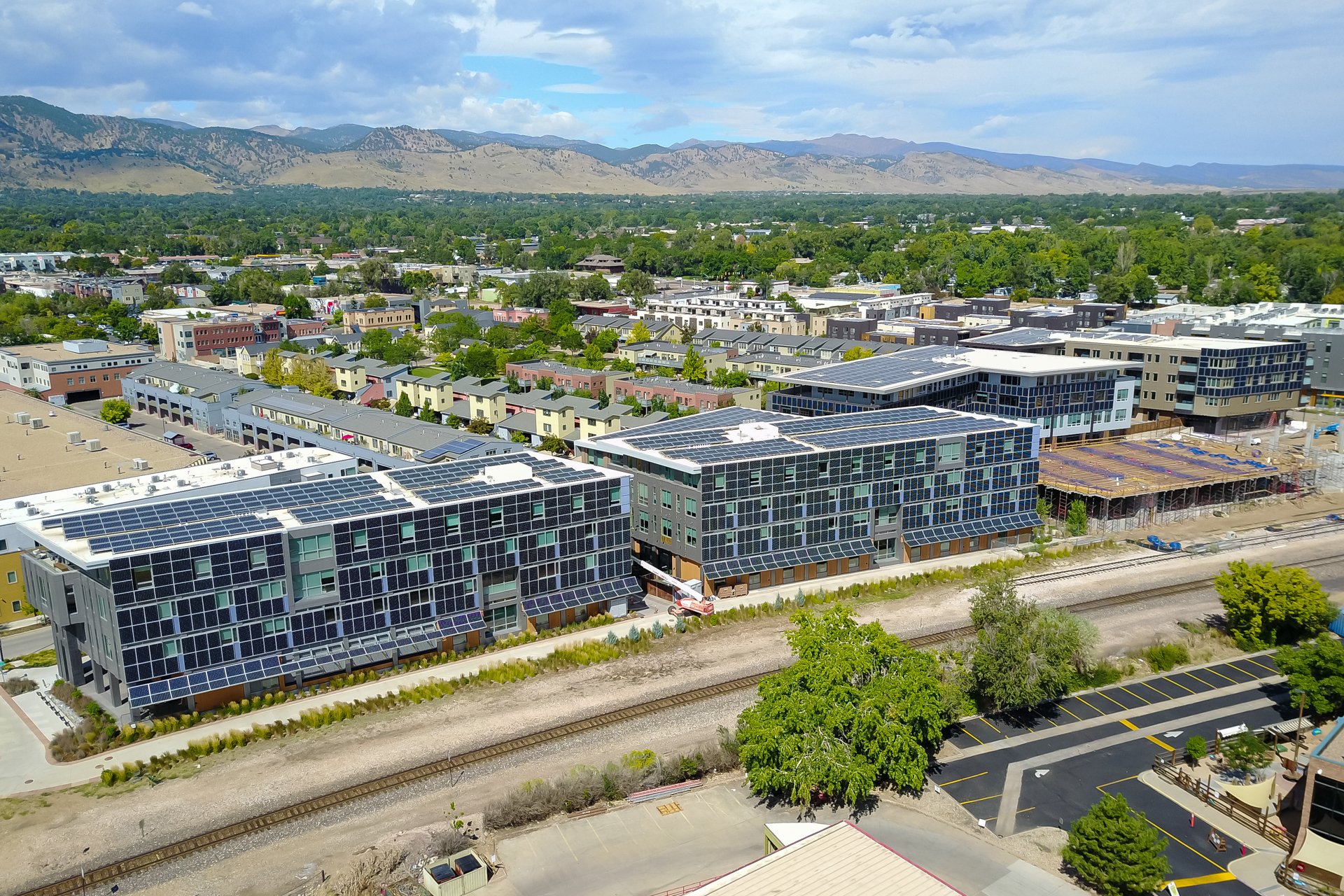Community Solar in Your Town: What to Expect
December 19, 2022

Solar energy projects have become increasingly more common across our nation over the last 10 years, allowing more communities than ever to access the benefits of localized clean energy infrastructure. During this time, widespread solar adoption has also coincided with the proliferation of rumors around solar. As is the case with any new technology that becomes more commonplace in our day-to-day lives, questions circulate regarding the potential harm this tech might pose to our public wellbeing. In this blog, we will review a couple of common questions and myths and discuss why your new local community solar initiative is a cause for celebration, not concern.
The Benefits of Community Solar
Solar panels are an extremely safe method for generating clean electricity. Some regions of the US are already targeting 100% renewable energy or 100% carbon neutrality by a certain date, often with interim goals along the way. Community solar initiatives enable local businesses, schools, residents, and other entities to support clean energy generation without installing anything directly on their rooftops. Construction of a community solar project decreases the need for other forms of power generation, including fossil fuel production which releases hazardous pollutants. Reducing pollutants and improving local air quality is important in many forward-looking local initiatives such as sustainability planning, climate action planning, and energy resilience planning.
Solar energy is critical to energy-sector resilience. What does that mean? Well, resilience is the ability to anticipate, prepare for, and adapt to changing conditions, and to withstand, respond to, and recover rapidly from disruptive events. Solar can provide a foundation for “grid islands” or “microgrids” by providing local power when the main grid is disrupted. Recently, after Hurricane Ian passed through Florida in October 2022, Babcock Ranch, a planned community of over 2,000 homes, retained access to power, water, and internet throughout the entire storm thanks to its 100% reliance on solar. With the proper planning and infrastructure in place, your town can also achieve this level of energy security and prepare for the next natural disaster.
Do Solar Panels Emit Radiation?
First, let’s define radiation. Radiation itself is any electromagnetic waves and particles. Gamma, x, infrared, ultraviolet, terahertz, megahertz, gigahertz, and radio waves are the most common in the electromagnetic spectrum. The electromagnetic spectrum is divided into two categories based on whether or not small doses of that radiation cause harm.
The two categories of electromagnetic radiation are ionizing radiation and non-ionizing radiation:
- Ionizing Radiation: This is the type of radiation that is typically emitted from UV light sources, gamma rays, and x-rays. These ionizing types of radiation tend to be the most cancer-causing and DNA altering, and you are advised to wear a protective lead layer when exposed.
- Non-Ionizing Radiation: This is the type of radiation that is emitted from light sources such as light bulbs, an oven, gigahertz from your WIFI system, and standard radio waves that enter our car radio systems.
Like many other common household devices, electricity from solar panels and inverters emits an extremely weak non-ionizing electromagnetic field. Even after extensive research, there is no evidence that exposure to low-level electromagnetic fields is harmful to human health, according to the World Health Organization (WHO). In fact, WHO notes that most scientists and doctors agree that if any health effects exist from low-level electromagnetic fields, they are likely to be very small compared to other health risks that people face in their daily lives.
Do Solar Panels Cause Cancer?
No, solar panels do not cause cancer. We’ve previously reviewed in detail the material components and functionality of solar panels, check it out here: how does a solar panel work? What’s key to understand is that all of the technology needed for converting the sun's rays into usable electricity is safely contained within the panel, meaning that the risk of exposure is extremely minimal. As long as the solar panels are disposed of properly, they will NOT endanger anyone throughout their lifespan.
What Does a Community Solar Garden Look Like?
While we personally love the sight of a beautifully crafted community solar project, we understand that others are less enthusiastic regarding their appearance. To these concerns, we’d like to emphasize that nearly all community solar projects are strategically designed to be out of the way, not obstructing the public’s day-to-day life. Community solar gardens consist of neat rows of solar panels. Additionally, we plant a seed mix of local grass species and wildflowers under our systems to enhance the site's aesthetics and create pollinator-friendly habitats. When possible, our projects use game fence to keep larger animals out of the project boundary while allowing smaller animals to come and go as they please. Solar energy is a much better “neighbor" than other forms of energy generation that might be developed within a range of your home or business. Community solar arrays are quiet, non-polluting, and a not-permanent development unlike a highrise or a factory.
Ask a Trusted Source
When discerning fact from fiction, it is critical to pay attention to the source of information that you are consuming. As a certified B-Corporation, Pivot Energy is a trusted company that goes above and beyond in giving back to the communities in which it provides clean energy. It is our mission to be a positive influence on everyone that we work with along this journey to accelerate the clean energy transition. Feel free to reach out with any questions regarding the new community solar initiatives that are being built in your area, or to ask for help in getting one started.


